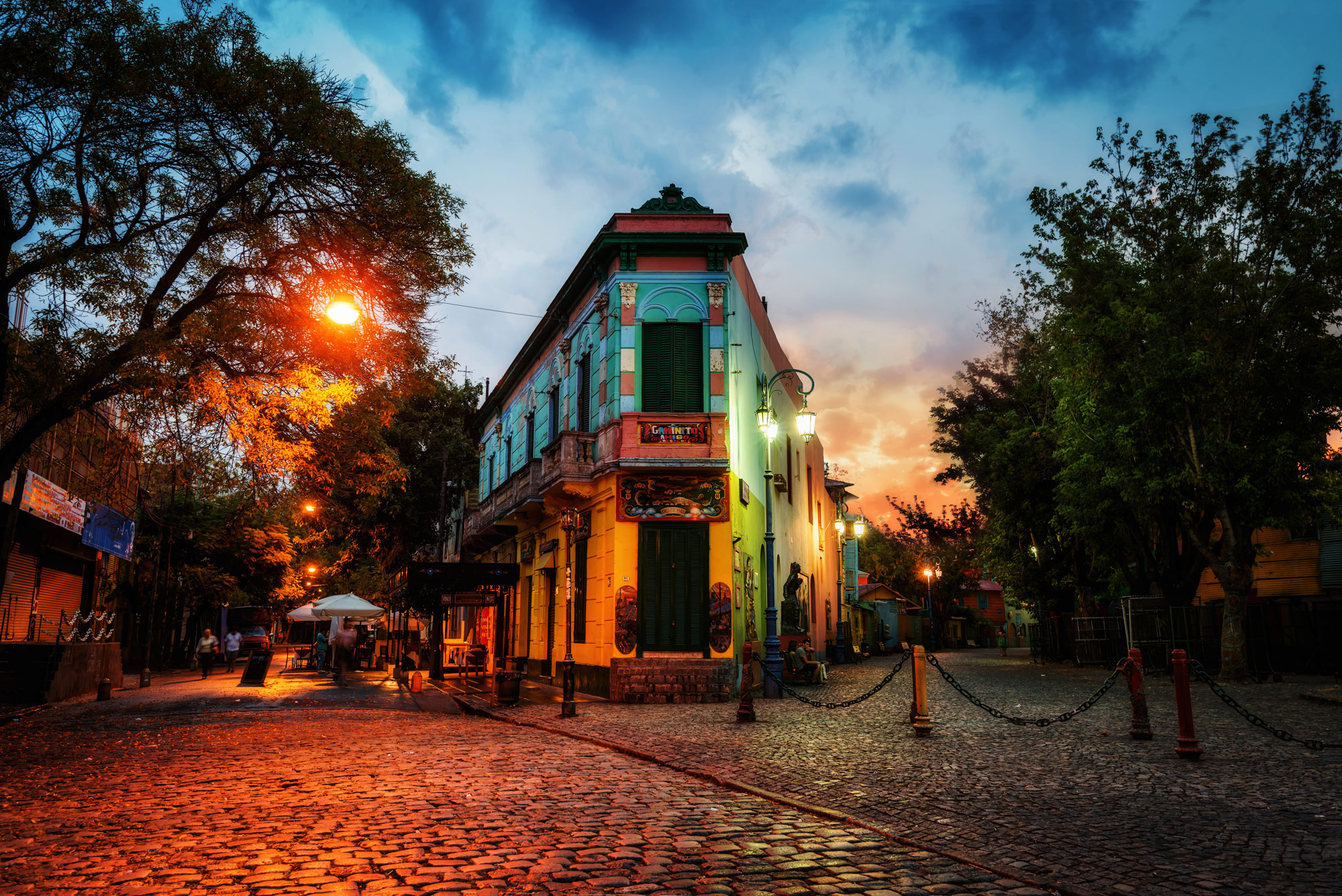The boundless energy of Argentina can be felt in nearly every corner of this large and prosperous South American nation. But its three most populous cities offer the best way to experience Argentina’s growing popularity as a South American vacation spot. These Argentine cities offer loads of historical sites to visit, entertainment options, and unique sites. Connect with a travel advisor to craft the perfect Argentina vacation itinerary!
Buenos Aires
Ask anyone about visiting Buenos Aires and you’re almost certain to hear about the city’s undeniable energy. From the city’s neoclassical and washed art nouveau architecture to its world-famous gaucho culture to its breathtaking urban murals, Bueno Aires is a sumptuous feast for the eyes, ears, and mouth.
Buenos Aires owes its cosmopolitan vibe to its diverse history which is embodied in Argentina’s chief (unofficial) national export: the Tango. Born from the country’s immigrant culture, the Tango is an intensely passionate dance and a quintessential form of Argentine artistic expression.
The Tango, and the culture that grew from it, breathe life into a world-renown Buenos Aires party scene that can satisfy just about any desire. Those seeking fine food, live music, and exhilarating nighttime entertainment will find plenty of options in Buenos Aires. Things to do include the city’s bar and club scene with something for everyone including elegant cocktail bars and trendy dance clubs teeming with life as well as sophisticated wine bars serving the best of Argentina’s New World vineyards.
Places to visit in Buenos Aires include the famous La Recoleta Cemetery, the renowned Teatro Colón, and Casa Rosada Museum, full of Argentine and Spanish Colonial artifacts from the previous 300 years.
Exclusive Offers.
Sign up to receive personalized promotions and packages for your next vacation from trusted travel experts.
Cordoba
Cordoba is a diverse and storied urban center that’s incubated more than its fair share of Argentina’s vibrant cultural elements. The city’s bittersweet vibe is reflected in the country’s beverage of choice, the fernet and Coke. Spark a conversation by asking patrons about the simple mix of liqueur and cola in any of the city’s many bars to learn (and sample) this rich symbol of Cordoba’s success and resilience.
Like the fernet and Coke, the city’s historic attractions combine colonial influences with native roots. The city’s architecture stands as a monument to a tumultuous but fascinating history of colonialism and liberation. Sites to see include museums such as Museo Historico UNC Manzana Jesuitica. This museum documents the nation’s 150-year experiment with a mixed European and Native American culture making Cordoba a testament to Argentina’s openness and fortitude in the face of adversity.
The city is also home to beautiful outdoor landscapes that make for a stunning setting for the region’s mild climate. There are sites you’ll want to view up close such as the beautiful Cascada del Toro Muerto waterfall in Mina Clavero. Cordoba’s outdoor attractions also include breathtaking gorges and rolling hills great for hiking. If you follow winding dirt roads outside of Cordoba far enough to reach the heart of Sierras Chicas mountains, you’ll discover the enchanting village of Capilla del Monte. Here, access scenic hiking paths leading you to the Sierras Chicas’ highest peak, the majestic Cerro Uritorco Mountain.
Rosario
Rosario, Argentina’s third largest city, is perhaps its most industrious. Rosario’s long history as a vibrant economic center has given rise to an up-and-coming tourist destination for both international tourists and Buenos Aires’ young and growing middle class.
Rosario’s waterfront district may not rival the natural beauty found in Cordoba or Buenos Aires but what it lacks in scenic splendor it makes up for in worthwhile urban attractions. Choose from specialty retail options within its closed malls, outdoor markets, and factory outlets for high-end looks that most travelers will find reasonably priced. The district also contains numerous pubs, coffee shops, and restaurants for a taste of city living.
Rosario isn’t just a modern cultural hub, it’s also a historic one with loads of things to do including the Museum of Contemporary Art. Visit the iconic Plaza San Martín, accessible via Rosario’s handful of pedestrian-exclusive streets, which provide access to travelers on foot exploring the city’s neoclassical architecture in an easy and safe way to do so.


